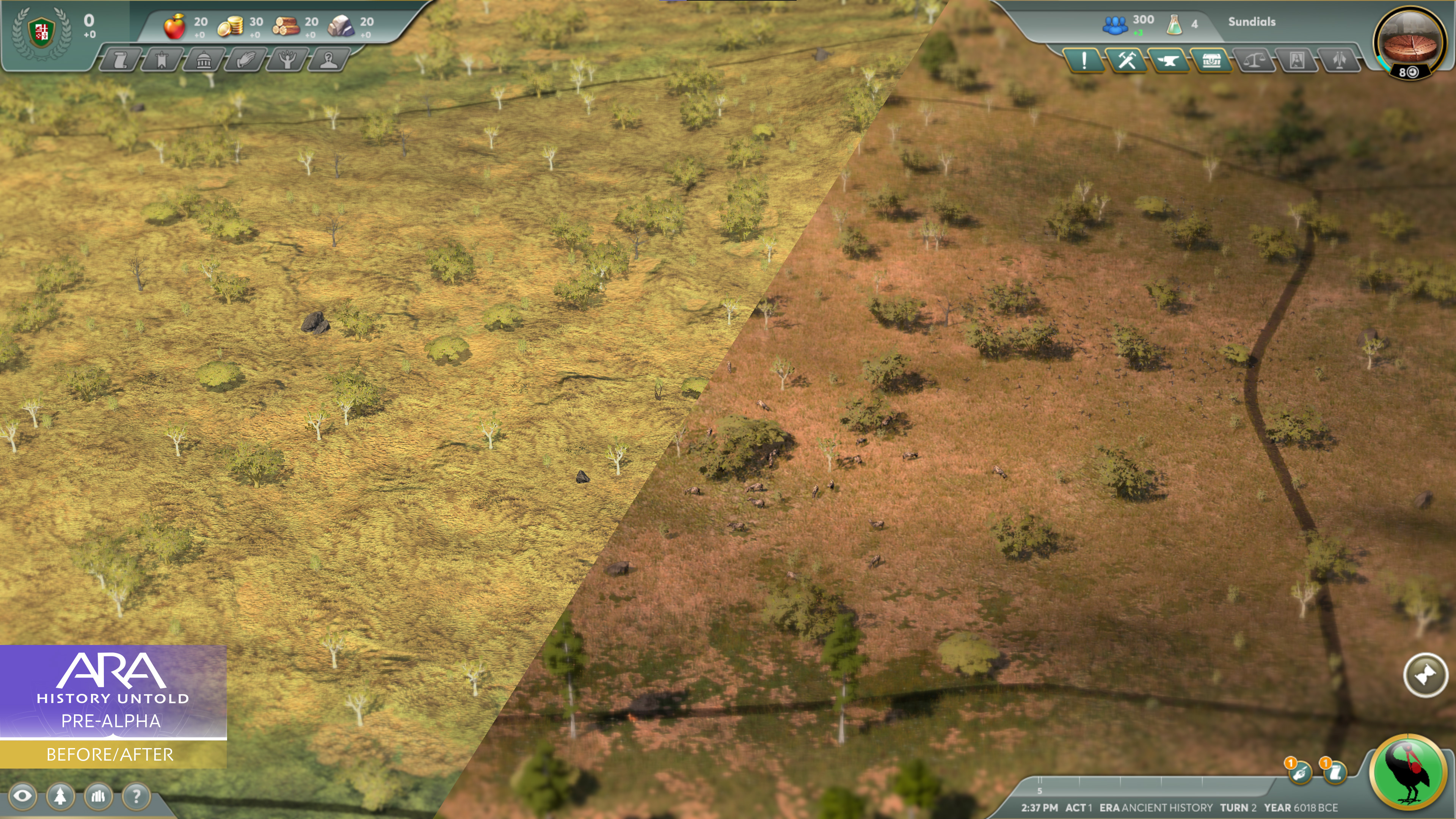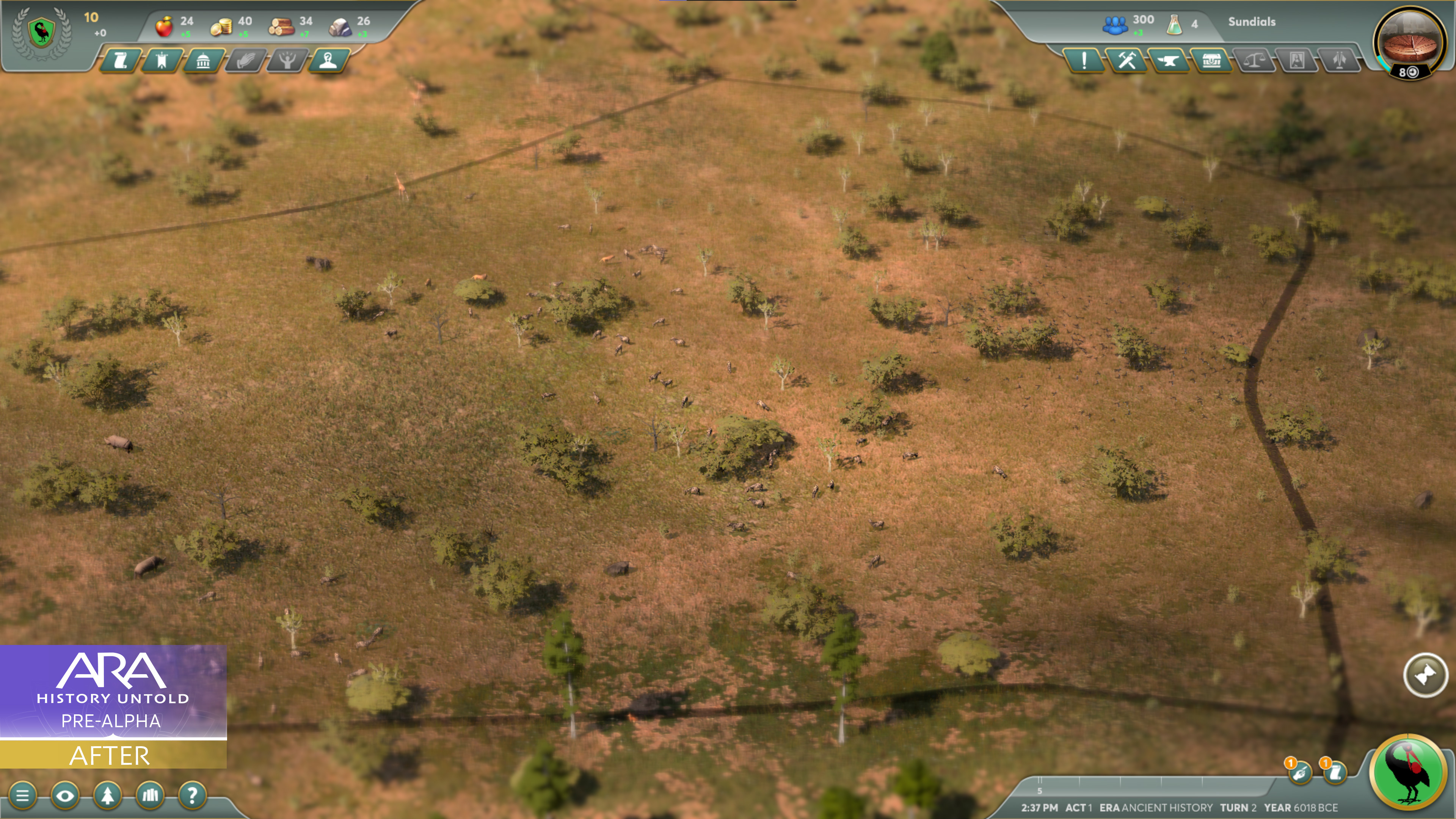Ara: History Untold's Living World - Natural Resources
Continuing our conversation on Ara: History Untold's living world and exploration, this week we'll dive further into the Natural Resources that can be found all over the map!
When players first start to explore beyond their Nation's borders, they'll have a chance to discover over fifty different kinds of Natural Resources, from rubber trees to silkworms, to precious metals or the staple fruits, vegetables, and grains that shaped the growth of early societies in the ancient world.
 A screenshot of undiscovered grapes in Ara: History Untold.
A screenshot of undiscovered grapes in Ara: History Untold.
However, as we mentioned in last week's post on Dangerous Wildlife, there may be obstacles to overcome before taking advantage of these items. Some resources are hidden, requiring additional surveying to be uncovered. Others are blocked by Dangerous Wildlife, until it can be dealt with. And not every Resource will be immediately useful - some require that a player has developed a relevant technology for their use.
Once a player has unlocked the potential of these resources, they can be processed into a variety of items which can be used in a myriad of ways to enhance their growing Nation. They can be consumed by cities to provide unique time limited bonuses, or used to craft important materials for building Improvements, Triumphs, and equipping Armies. If a player has enough to go around, they can also be used for trade. As the player advances through the Technology Eras, new ways to take advantage of their Natural Resources will be discovered, unlocking their potential for the generations yet to come.
 A screenshot of a farm in Ara: History Untold.
A screenshot of a farm in Ara: History Untold.
There is plenty to discover in Ara's living world and we're excited to divulge more about crafting and the economy soon. Be sure to stay tuned for more!
https://store.steampowered.com/app/2021880/Ara_History_Untold/
When players first start to explore beyond their Nation's borders, they'll have a chance to discover over fifty different kinds of Natural Resources, from rubber trees to silkworms, to precious metals or the staple fruits, vegetables, and grains that shaped the growth of early societies in the ancient world.
 A screenshot of undiscovered grapes in Ara: History Untold.
A screenshot of undiscovered grapes in Ara: History Untold.However, as we mentioned in last week's post on Dangerous Wildlife, there may be obstacles to overcome before taking advantage of these items. Some resources are hidden, requiring additional surveying to be uncovered. Others are blocked by Dangerous Wildlife, until it can be dealt with. And not every Resource will be immediately useful - some require that a player has developed a relevant technology for their use.
Once a player has unlocked the potential of these resources, they can be processed into a variety of items which can be used in a myriad of ways to enhance their growing Nation. They can be consumed by cities to provide unique time limited bonuses, or used to craft important materials for building Improvements, Triumphs, and equipping Armies. If a player has enough to go around, they can also be used for trade. As the player advances through the Technology Eras, new ways to take advantage of their Natural Resources will be discovered, unlocking their potential for the generations yet to come.
 A screenshot of a farm in Ara: History Untold.
A screenshot of a farm in Ara: History Untold.There is plenty to discover in Ara's living world and we're excited to divulge more about crafting and the economy soon. Be sure to stay tuned for more!
https://store.steampowered.com/app/2021880/Ara_History_Untold/
 A screenshot of an early settlement in Ara: History Untold.
A screenshot of an early settlement in Ara: History Untold. A screenshot of the Ara: History Untold Insider Forums, where one user writes: "I hate cougars I hate cougars I hate cougars"
A screenshot of the Ara: History Untold Insider Forums, where one user writes: "I hate cougars I hate cougars I hate cougars" A screenshot of Ara: History Untold UI showing that wolves will bolck the use of the area until they are defeated.
A screenshot of Ara: History Untold UI showing that wolves will bolck the use of the area until they are defeated.








